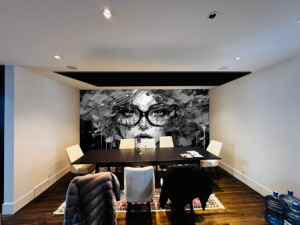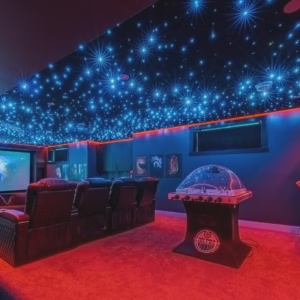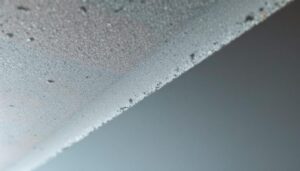All you need to know about Stretch Ceiling Profiles (track)
Hey, I’m Aivaras and I’m the owner of Space Ceiling, a Canadian company that specializes in stretch ceilings and luxury renovations. I have been in the industry for decades and have worked on countless projects, learned my craft and understand what makes a great ceiling truly great. Today I want to share my knowledge about a topic that is crucial to any stretch ceiling project: profiles.
Stretch ceilings have become a staple of modern design, loved for their versatility, elegance and functionality. But behind every beautiful stretch ceiling there is a critical component that often goes unnoticed – the profiles. These tracks are the backbone of the system, supporting the fabric and allowing the beautiful, seamless finishes that designers, architects and homeowners love. This guide is written from my heart and experience to help you understand everything about stretch ceiling profiles: types, applications and benefits.
What are Stretch Ceilings?
Stretch ceilings are a modern ceiling solution where a thin flexible membrane is stretched over a perimeter track or frame. This gives a smooth seamless surface which can be customized to any room or space. Made from materials like PVC, polyester and Fabric stretch ceilings come in various colors and textures to suit any design taste.
One of the best features of stretch ceilings is their versatility. They can be used to create different effects from simple flat ceilings to complex curved or angled designs. This flexibility makes them a popular choice for interior design projects and provide both aesthetic and functional benefits. Plus the ease of installation and the ability to hide existing ceiling imperfections or features makes them even more appealing.
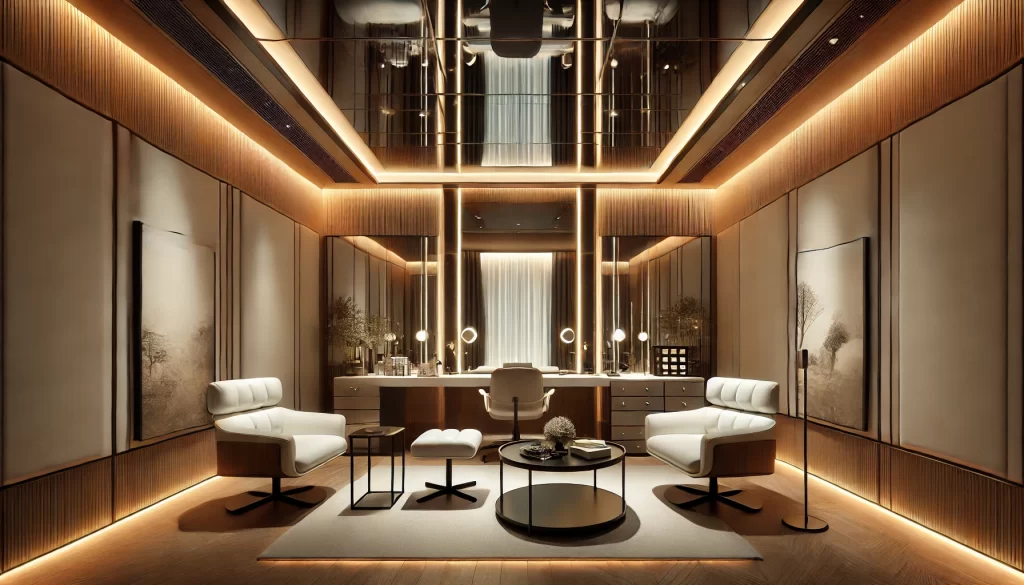
Stretch Ceiling Profiles
Stretch ceiling profiles are the backbone of stretch ceiling systems, holding the fabric or membrane in place. Made from plastic or aluminum these profiles have different structural and aesthetic properties based on the type.
The Importance of Profiles
Choosing the right profile is critical to the installation process. It affects not only the installation of the ceiling but also the overall look and performance of the finished ceiling. Profiles determine the distribution of weight and load, how the stretch material adheres to the walls and how light interacts with the ceiling surface. A good profile can make the room look amazing and not just a functional element but a design feature as well. Plus our profiles comply with national building codes so safety and quality standards are met.
Types of Stretch Ceiling Profiles
There are several types of profiles used in stretch ceiling installations each with its own benefits for specific applications. The three main types are h profiles, f profiles and v profiles.
h Profile
The h profile is for wall mounting and gives a seamless transition between the stretch ceiling and walls. This profile is good for a clean and polished look and easy integration with various lighting solutions. Its slim design hides visual clutter and makes the space look better.
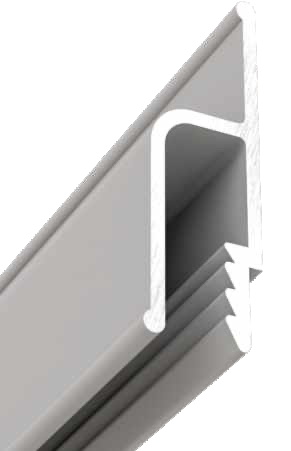
Applications: The h profile is for residential use where a modern and sleek look is required. Examples are living rooms, bedrooms and dining areas where a smooth and continuous visual flow is needed.
F Profile
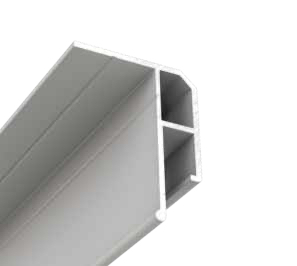
The f profile is for ceiling mounting and is the main support structure for the stretch membrane. It’s good for larger areas, creates continuity and enhances the design. The f profile allows for innovative lighting integration, you can add recessed lighting or create shapes within the ceiling design.
Applications:: Used in commercial spaces like offices, galleries or retail environments the f profile provides flexibility in design and can support heavier lighting fixtures. The f profile can create a shadow gap for a clean and modern look. It allows designers to shape and form, to create a visually interesting ceiling that grabs attention.
V Profile
The v profile is for creating ceiling separations and divisions, to create multiple levels or zones within a space. This profile offers creative design possibilities and allows for installations that defines different areas both aesthetically and functionally.
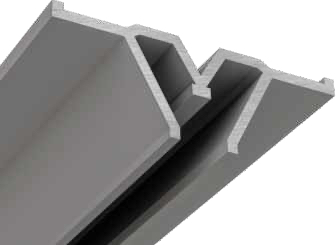
Applications: The v profile is commonly used in hospitality environments like hotels and restaurants where areas need to be defined without physical barriers. The flexibility to connect two ceilings together.
Design and Planning for Stretch Ceilings
Designing and planning for stretch ceilings involves several steps to ensure a successful installation. First is to measure the room accurately to get the dimensions and layout of the ceiling. Choosing the right material and finish is critical as it affects the overall look and feel of the space. Lighting and acoustics should also be considered to make the room look and function better.
Custom printed designs and patterns can be added to the stretch ceiling to make it unique and personalized. For a sleek modern look aluminum profiles are good, while PVC or polyester materials can give a traditional or textured look. A well designed stretch ceiling can change a room, create space and make the overall ambiance better.
Benefits of Stretch Ceiling Profiles
Stretch ceiling profiles has many advantages that makes it a popular choice in modern design.
Flexibility
One of the best feature of stretch ceiling profiles is its flexibility. It allows homeowners and designers to create custom ceiling shapes that fits to different room design and architectural style. Whether its a flat ceiling or a multi-level installation, stretch ceiling profiles can be made to fit any design.
Stretch ceiling profiles can also manage hot and cold temperature by distributing air evenly, no need for ducts or vents.
Plastic Profiles: Lightweight Solutions
Plastic profiles are used in residential areas because of its lightweight and cost effective nature.
Advantages of Plastic Profiles
Cost-Effective: Plastic profiles is cheaper than aluminum profiles, a budget friendly option for many homeowners.
Easy Installation: The lightweight design makes installation easier, reduces labor time and cost.
Variety of Styles: Available in different colors and finishes, plastic profiles can match any interior design theme.
Limitations
Although plastic profiles is versatile, it has its limitations. It may not support heavy lighting fixtures or bigger installations as well as aluminum profiles. Suggest to assess the design requirements and choose the right material based on the desired outcome.
Aluminum Profiles: Durable and Robust
For bigger or commercial installations, aluminum profiles is the preferred choice because of its strength and durability.
Benefits of Aluminum Profiles
High Load-Bearing Capacity: Aluminum profiles can handle big installations, heavy lighting fixtures or decorative elements.
Modern Aesthetic: Anodized or powder-coated finishes not only makes it durable but also gives a sleek and modern look that can blend with any design theme.
Aesthetic Versatility
Aluminum profiles can have different finishes and colors, it can adapt to any design style. From minimalist modern design to ornate decorative schemes, aluminum profiles has the aesthetic versatility that designers needs today.
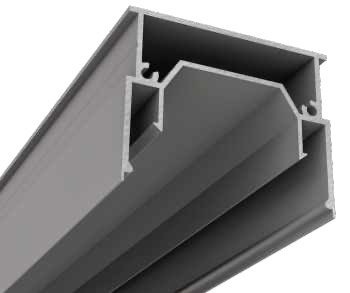
Light Profiles with Light
Lighting is part of any ceiling design and light profiles is the solution for integrating lighting into stretch ceilings.
Types of Light Profiles
Light Profile with Shade**: This type gives a softer glow and reduces glare, perfect for living areas like bedrooms and lounges.
Invisible Shade Led profile with Diffuser**: For those who like minimalist design, this profile hides LED strips, creates a seamless design while diffusing light evenly to the ceiling.
Visible Diffusers**: These decorative elements can add functionality and style, as an accent feature in the ceiling design.
Integrating lighting solutions not only increases visibility but can also set mood and aesthetics, to the overall feel of the space.
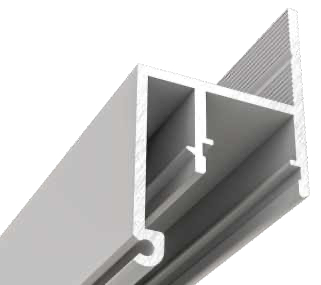
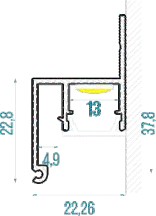
Specialty Profiles for Dynamic Designs
Stretch Ceiling Installation
Installation of stretch ceiling is easy and fast, it involves several steps. First, the room is prepared by cleaning the existing ceiling surface and ready for the new installation. Then, the perimeter track is installed around the edges of the room, a frame for the stretch membrane.
The installation involves two main parts: the perimeter track and the membrane. The membrane is stretched over the frame, a smooth surface that follows the shape and size of the ceiling. This can be done fast and with minimal disruption to daily activities. Stretch ceiling can be installed over existing drywall or other surfaces, perfect for renovation or retrofit projects.
Specialty profiles allows designers to go beyond the traditional uses and create amazing ceiling designs.
Curved Profiles
Curved profiles creates flowing design that adds dynamic to interior spaces. Often seen in spas, restaurants and creative spaces, it creates a relaxing and inviting ambiance.
Applications: In wellness centers, curved profiles can mimic natural forms, to promote relaxation.
Multi-Level Profiles
Multi-level profiles adds architectural interest by having different ceiling heights, it enhances the visual appeal of the interior. It can create focal points or separate areas without the need of physical dividers.
Applications: This design approach is popular in open-plan offices or retail spaces where defining spaces is important but still maintain an open feel.
Profile Selection Considerations
Top Manufacturers in the Industry
Several top manufacturers are already in the stretch ceiling industry, known for their quality products and solutions. Clipso with 15 years of experience is famous for producing high quality stretch ceiling. Their wide range of products cater to different design needs and applications.
Barrisol is another well known manufacturer, offering stretch ceiling systems for various requirements. Their products are durable and visually appealing. Ecophon, a leader in acoustic ceilings and wall systems, provides solutions that can be integrated with stretch ceiling to manage sound in a space.
When choosing a manufacturer, consider product quality, customer service and warranty. These manufacturers have pushed innovation and excellence in the stretch ceiling industry, products for different needs and applications.
Choosing the right profiles for a stretch ceiling project involves several factors to ensure the final result matches your design.
Room Specifications
Know the height, size and usage of the space. For example, the profile chosen should match the room’s dimension and purpose—cozy for residential spaces or spacious and inviting for public areas.
Design Intent
Make sure the profile chosen matches the desired look of the space. Aluminum profiles are good for modern design, plastic profiles for casual ambiance.
Climate Considerations
Local climate should be considered. Humidity, temperature and exposure to sunlight can affect material durability, so choose profiles that can withstand specific environmental conditions.
Real-World Applications
Here are some examples to give you an idea how stretch ceiling profiles can be used:
Residential Renovation*: A family home used f profile in their living room to create a design focal point with integrated lighting. Recessed lights highlighted the space and modern white finish gave a clean look.
Commercial Office Design*: A tech company used v profile to separate zones in their open office layout. This allowed them to define collaboration spaces and quiet areas without losing the open concept.
Restaurant Ambiance*: A high-end restaurant used curved profile to create charming alcoves, to give them an intimate dining experience that sets them apart from others.
These examples show how carefully chosen stretch ceiling profiles can make a big impact.
Conclusion
Stretch ceiling profiles are key to modern interiors functionality and aesthetics. By knowing the options—h, f, v profiles—designers and homeowners can create beautiful and functional spaces for their needs. The difference between lightweight plastic profiles for residential and robust aluminum profiles for commercial ensures there’s an option for every project.
When you design with purpose, space and function, space ceiling can turn any space into a modern masterpiece. As design trends change, stretch ceiling and profiles will only get more exciting.
Originally posted on December 12, 2024 @ 3:54 am

